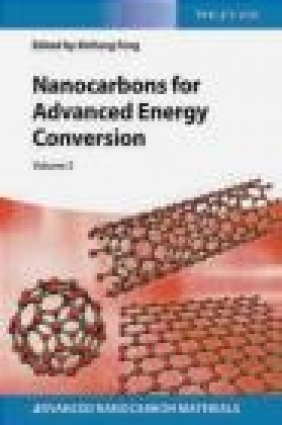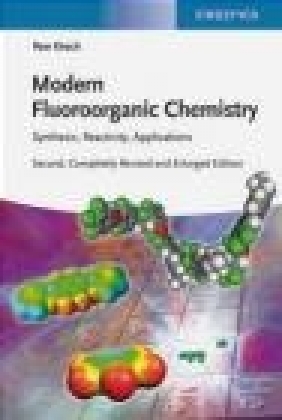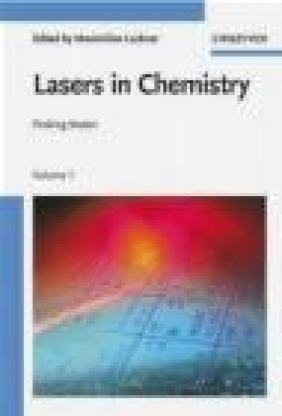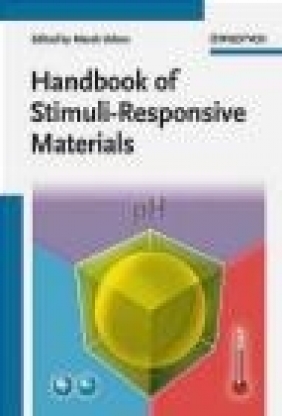Modern Fluoroorganic Chemistry
Peer Kirsch
Modern Fluoroorganic Chemistry
Peer Kirsch
- Producent: VCH
- Rok produkcji: 2013
- ISBN: 9783527331666
- Ilość stron: 384
- Oprawa: Twarda
Niedostępna
Opis: Modern Fluoroorganic Chemistry - Peer Kirsch
For the second edition, this book has been completely revised and updated, as well as enlarged to reflect the latest developments in synthetic organic fluorine chemistry, plus novel applications in materials science and medicinal chemistry. In addition, new chapters have been added on such important applications as organic electronics (LEDs) and fluorinated dyes. A valuable reference for fluorine chemists while also providing non-specialists with an introduction to the field. "... a well-produced book with attractive graphics, photos and schemes. Throughout the book, coloured electrostatic maps of small organofluorine compounds are used to illustrate charge distributions. These are effective as well as attractive. I would point any organic chemist to this book who wants to learn about and do some fluorine chemistry. It provides uncluttered descriptions and a clear orientation to the literature in this important area of the organic chemistry." CHEMBIOCHEM - A European Journal of Chemical BiologyPreface to the Second Edition XIII Preface to the First Edition XV Abbreviations XVII 1 Introduction 1 1.1 Why Organofluorine Chemistry? 1 1.2 History 1 1.3 The Basic Materials 3 1.3.1 Hydrofluoric Acid 3 1.3.2 Fluorine 5 1.4 The Unique Properties of Organofluorine Compounds 7 1.4.1 Physical Properties 7 1.4.2 Chemical Properties 13 1.4.3 Ecological Impact 15 1.4.3.1 Ozone Depletion by Chlorofluorocarbons 15 1.4.3.2 Greenhouse Effect 17 1.4.4 Physiological Properties 18 1.4.5 Analysis of Fluorochemicals: 19F NMR Spectroscopy 20 References 21 Part I Synthesis of Complex Organofluorine Compounds 25 2 Introduction of Fluorine 27 2.1 Perfluorination and Selective Direct Fluorination 27 2.2 Electrochemical Fluorination (ECF) 34 2.3 Nucleophilic Fluorination 36 2.3.1 Finkelstein Exchange 36 2.3.2 "Naked" Fluoride 36 2.3.3 Lewis Acid-Assisted Fluorination 39 2.3.4 The "General Fluorine Effect" 41 2.3.5 Amine--Hydrogen Fluoride and Ether--Hydrogen Fluoride Reagents 42 2.3.6 Hydrofluorination, Halofluorination, and Epoxide Ring Opening 43 2.4 Synthesis and Reactivity of Fluoroaromatic Compounds 46 2.4.1 Synthesis of Fluoroaromatic Compounds 46 2.4.2 Reductive Aromatization 47 2.4.3 The Balz--Schiemann Reaction 47 2.4.4 The Fluoroformate Process 49 2.4.5 Transition Metal-Catalyzed Aromatic Fluorination 49 2.4.6 The Halex Process 55 2.4.7 Think Negative! -- "Orthogonal" Reactivity of Perfluoroaromatic and Perfluoroolefinic Systems 55 2.4.8 The "Special Fluorine Effect" 58 2.4.9 Aromatic Nucleophilic Substitution 59 2.4.10 Activation of the Carbon--Fluorine Bond by Transition Metals 63 2.4.10.1 Electrophilically Activated Arylation by Fluoroarenes 63 2.4.11 Activation of Fluoroaromatic Compounds by Ortho-Metalation 64 2.5 Transformations of Functional Groups 67 2.5.1 Hydroxy into Fluoro 67 2.5.1.1 Two-Step Activation--Fluorination 68 2.5.1.2 alpha, alpha-Difluoroalkylamine and alpha-Fluoroenamine Reagents 68 2.5.1.3 Sulfur Tetrafluoride, DAST, and Related Reagents 71 2.5.1.4 Amine--Hydrogen Fluoride Reagents 73 2.5.2 Conversion of Carbonyl into gem-Difluoromethylene 74 2.5.2.1 Sulfur Tetrafluoride, DAST, and Related Reagents 74 2.5.3 Carboxyl into Trifluoromethyl 77 2.5.4 Oxidative Fluorodesulfuration 78 2.6 "Electrophilic" Fluorination 85 2.6.1 Xenon Difluoride 85 2.6.2 Perchloryl Fluoride and Hypofluorides 86 2.6.3 "NF"-Reagents 88 References 98 3 Perfluoroalkylation 107 3.1 Radical Perfluoroalkylation 107 3.1.1 Structure, Properties, and Reactivity of Perfluoroalkyl Radicals 107 3.1.2 Preparatively Useful Reactions of Perfluoroalkyl Radicals 110 3.1.3 "Inverse" Radical Addition of Alkyl Radicals to Perfluoroolefins 115 3.2 Nucleophilic Perfluoroalkylation 118 3.2.1 Properties, Stability, and Reactivity of Fluorinated Carbanions 118 3.2.2 Perfluoroalkyl Metal Compounds 120 3.2.3 Perfluoroalkylsilanes 130 3.3 "Electrophilic" Perfluoroalkylation 139 3.3.1 Properties and Stability of Fluorinated Carbocations 139 3.3.2 Arylperfluoroalkyliodonium Salts 142 3.3.3 Perfluoroalkyl Sulfonium, Selenonium, Telluronium, and Oxonium Salts 149 3.3.4 Fluorinated Johnson Reagents 156 3.4 Difluorocarbene and Fluorinated Cyclopropanes 156 References 160 4 Selected Fluorinated Structures and Reaction Types 169 4.1 Difluoromethylation and Halodifluoromethylation 169 4.2 The Perfluoroalkoxy Group 172 4.3 The Perfluoroalkylthio Group and Sulfur-Based Super-Electron-Withdrawing Groups 176 4.4 The Pentafluorosulfanyl Group and Related Structures 179 References 188 5 The Chemistry of Highly Fluorinated Olefins 193 5.1 Fluorinated Polymethines 193 5.2 Fluorinated Enol Ethers as Synthetic Building Blocks 198 References 205 Part II Fluorous Chemistry 207 6 Fluorous Chemistry 209 6.1 Fluorous Biphase Catalysis 209 References 224 7 Fluorous Synthesis and Combinatorial Chemistry 227 7.1 Fluorous Synthesis 227 7.2 Separation on Fluorous Stationary Phases 232 7.3 Fluorous Concepts in Combinatorial Chemistry 233 References 242 Part III Applications of Organofluorine Compounds 245 8 Halofluorocarbons, Hydrofluorocarbons, and Related Compounds 247 8.1 Polymers and Lubricants 249 8.2 Applications in the Electronics Industry 256 8.3 Fluorinated Dyes 258 8.4 Liquid Crystals for Active Matrix Liquid Crystal Displays 260 8.4.1 Calamitic Liquid Crystals: a Short Introduction 260 8.4.2 Functioning of Active Matrix LCDs 261 8.4.2.1 The Physical Properties of Nematic Liquid Crystals 264 8.4.3 Why Fluorinated Liquid Crystals? 267 8.4.3.1 Improved Mesophase Behavior by Lateral Fluorination 267 8.4.3.2 Fluorinated Polar Groups 269 8.4.3.3 Improved Reliability 274 8.4.3.4 Fluorinated Bridge Structures 275 8.4.4 Conclusion and Outlook 279 8.5 Fluorine in Organic Electronics 281 8.5.1 Organic Field Effect Transistors (OFETs) 281 8.5.2 Organic Light-Emitting Diodes (OLEDs) 290 References 293 9 Pharmaceuticals and Other Biomedical Applications 299 9.1 Why Fluorinated Pharmaceuticals? 299 9.2 Lipophilicity and Substituent Effects 300 9.3 Hydrogen Bonding and Electrostatic Interactions 303 9.4 Stereoelectronic Effects and Conformation 306 9.5 Metabolic Stabilization and Modulation of Reaction Centers 310 9.6 Bioisosteric Mimicking 316 9.7 Mechanism-Based "Suicide" Inhibition 325 9.8 Fluorinated Radiopharmaceuticals 329 9.9 Inhalation Anesthetics 333 9.10 Blood Substitutes and Respiratory Fluids 334 9.11 Contrast Media and Medical Diagnostics 335 9.12 Agricultural Chemistry 336 References 340 Appendix A: Typical Synthetic Procedures 351 A.1 Selective Direct Fluorination 351 A.1.1 General Remarks 351 A.1.2 Fluorination of Diethyl Malonate (1) to Diethyl Fluoromalonate (2) 352 A.1.3 Synthesis of Bis(4-nitrophenyl)tetrafluorosulfurane (4) (Isomeric Mixture: 15% trans--85% cis) 352 A.1.4 Isomerization to trans-4 353 A.2 Hydrofluorination and Halofluorination 353 A.2.1 General Remarks 353 A.2.2 Synthesis of the Liquid Crystal 6 354 A.2.3 Synthesis of 8 354 A.3 Electrophilic Fluorination with F-TEDA--BF4 (Selectfluor) 355 A.3.1 Synthesis of the Fluorosteroid 11 355 A.3.2 Synthesis of Diethyl Fluorophenylmalonate (13) 355 A.4 Fluorinations with DAST and BAST (Deoxofluor) 356 A.4.1 General Remarks 356 A.4.2 General Procedure for Fluorination of Alcohols 356 A.4.3 General Procedure for Fluorination of Aldehydes and Ketones 357 A.5 Fluorination of a Carboxylic Acid with Sulfur Tetrafluoride 358 A.5.1 General Remarks 358 A.5.2 Synthesis of 4-Bromo-2-(trifluoromethyl)thiazole (23) 358 A.6 Generation of a Trifluoromethoxy Group by Oxidative Fluorodesulfuration of a Xanthogenate 358 A.6.1 Synthesis of the Liquid Crystal 25 358 A.7 Oxidative Alkoxydifluorodesulfuration of Dithianylium Salts 359 A.7.1 Dithianylium Triflate (27) 359 A.7.2 Synthesis of 28 from the Dithianylium Salt 27 360 A.7.3 Synthesis of 28 from the Ketenedithioketal 29 360 A.8 Electrophilic Trifluoromethylation with Umemoto's Reagents 361 A.8.1 Trifluoromethylation of the Trimethylsilyldienol Ether 30 361 A.9 Nucleophilic Trifluoromethylation with Me3SiCF3 362 A.9.1 Nucleophilic Trifluoromethylation of Ketone 33 362 A.10 Transition Metal-Mediated Aromatic Perfluoroalkylation 362 A.10.1 Copper-Mediated Trifluoromethylation of 36 Using Silane Reagents 362 A.10.2 Palladium-Mediated Trifluoromethylation of Aryl Chloride 41 363 A.11 Copper-Mediated Introduction of the Trifluoromethylthio Group 364 A.11.1 Preparation of Trifluoromethylthio Copper Reagent 43 364 A.11.2 Reaction of CuSCF3 with 4-Iodoanisole (44) 364 A.12 Substitution Reactions on Fluoroolefins and Fluoroarenes 365 A.12.1 Preparation of alpha, beta-Difluoro-beta-chlorostyrenes (47) 365 A.12.2 Preparation of alpha, beta-Difluorocinnamic Acid (48) 365 A.12.3 ortho-Metalation of 1,2-Difluorobenzene (49) with LDA 365 A.13 Reactions with Difluoroenolates 366 A.13.1 Preparation of the Trimethylsilyl Difluoroenol Ether 52 366 A.13.2 Addition of 52 to Carbonyl Compounds 367 References 367 Appendix B: Index of Synthetic Conversions 369 Index 373
Szczegóły: Modern Fluoroorganic Chemistry - Peer Kirsch
Tytuł: Modern Fluoroorganic Chemistry
Autor: Peer Kirsch
Producent: VCH
ISBN: 9783527331666
Rok produkcji: 2013
Ilość stron: 384
Oprawa: Twarda
Waga: 0.99 kg





























